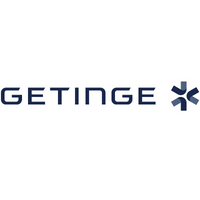The Nordic countries: Denmark, Finland, Norway, and Sweden, collectively account for roughly 1% of global GDP and only 0.3% of the world’s population. Yet, their economic contributions have punched far above their weight, producing an impressive array of global business giants.
From Denmark’s Lego, the world’s largest toy manufacturer by revenue, to Sweden’s Ikea, the leading furniture producer and even the sixth-largest restaurant chain globally (thanks to its famous Swedish meatballs), Nordic companies have become leaders across diverse industries. These include machinery (Atlas Copco), telecom (Nokia and Ericsson), safety belts (Autoliv), and elevators (Kone). The region has also birthed innovative tech leaders like Spotify, the global music streaming giant, and Klarna, the dominant “buy now, pay later” service.
Outpacing Europe in Performance
Over the past decade, Nordic companies have outperformed their European counterparts. Publicly listed non-financial firms in the region have delivered higher shareholder returns than the European average. Today, Nordic companies make up approximately 13% of the MSCI Europe Index, which ranks the continent’s most highly valued firms, a notable rise from 10% just five years ago.
The Key to Nordic Success
What drives this remarkable success? Four key factors explain why Nordic businesses thrive:
- Global Reach and Diversification
Nordic companies excel at expanding internationally. Among the ten highest-valued Nordic firms with available data, only 2% of median revenue is generated domestically. This contrasts sharply with 12% for European peers and 46% for U.S. firms. Nordic companies have mastered the art of globalization, relying less on local markets and more on overseas opportunities.
- Enthusiasm for New Technology
Nordic firms have long been early adopters of cutting-edge technology, a legacy evident in the region’s flourishing startup ecosystem. Stockholm, for instance, attracts more venture capital than most European cities, trailing only London, Paris, and Berlin despite its smaller population. Entrepreneurs in the region benefit from robust social safety nets, including unemployment benefits and publicly funded healthcare and education. This environment encourages risk-taking and innovation.
- Economic Freedom with Supportive Policies
Despite their reputation for high taxes funding generous welfare systems, Nordic countries maintain competitive corporate tax rates similar to those in the United States. This policy balance—combining economic freedom with strong government support—creates a fertile ground for business growth and entrepreneurship.
- Long-Term Ownership and Patient Capital
A distinctive hallmark of Nordic companies is their long-term focus, backed by patient and stable ownership. According to McKinsey, 80% of Nordic large-cap firms have long-term ownership structures, compared to 60% in Europe and just 20% in the United States.
Family dynasties like Møller (Maersk) and Kristiansen (Lego) maintain significant influence in their companies, even as external professionals manage daily operations. In Sweden, the Wallenberg family, with its roots in banking, holds significant stakes in companies like Atlas Copco and Ericsson. Foundations also play a prominent role, with entities like the Carlsberg Foundation and Novo Nordisk Foundation ensuring stability and enabling long-term investments. These structures shield Nordic firms from foreign acquisitions and allow them to prioritize sustainable growth.
A Formula for Success
The Nordic region’s unique blend of global ambition, technological prowess, supportive policies, and long-term focus has made it a model of innovation and resilience. As these companies continue to grow and shape industries worldwide, they exemplify how small economies can achieve outsized influence on the global stage.
Source of information: The Economist, https://www.economist.com/business/2024/12/30/why-are-nordic-companies-so-successful
Published: December 30, 2024
































